3D Printed Mini Loom
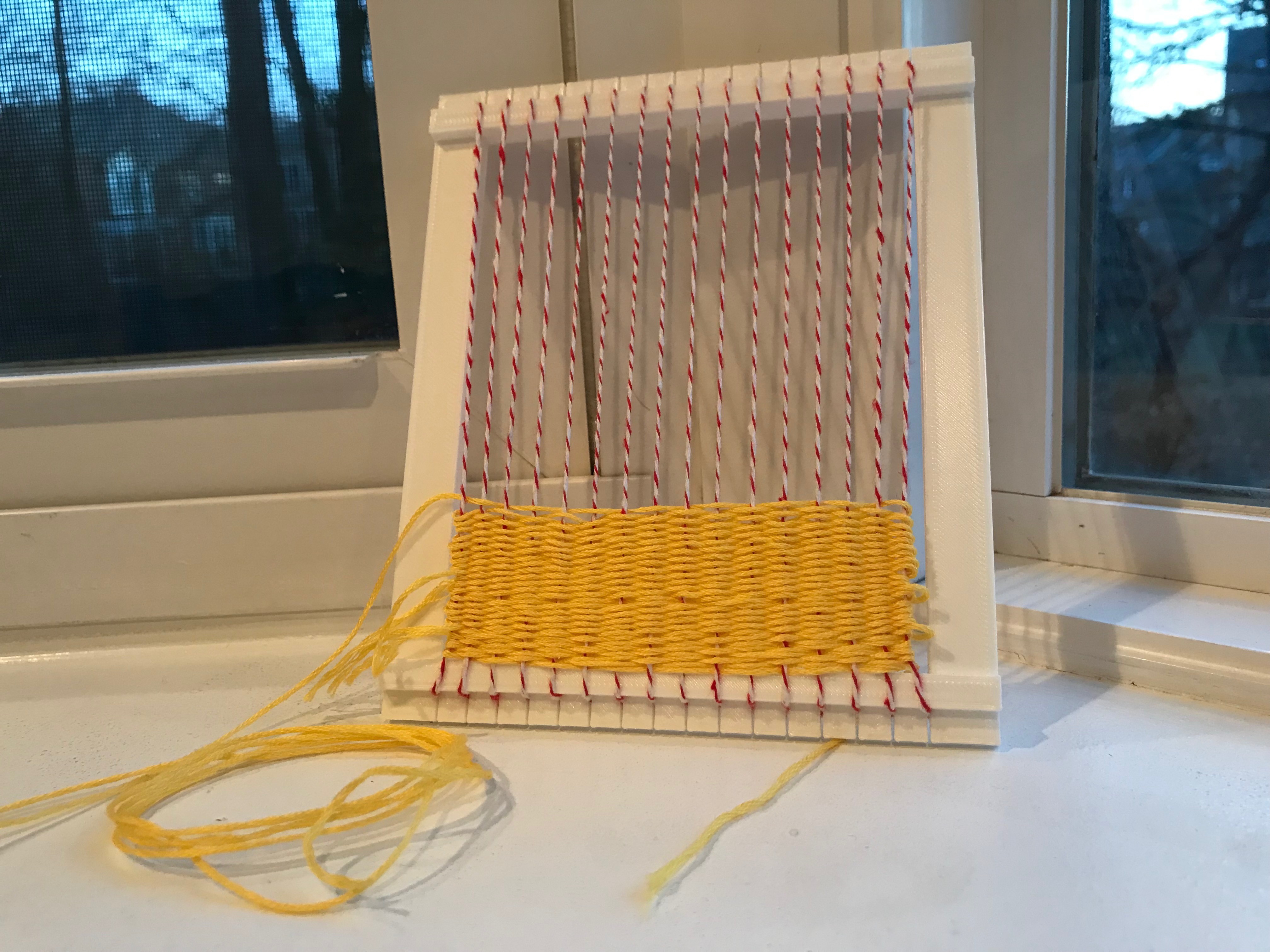
I don't have much experience weaving, but I do have fond memories of it. Using cheap, cardboard looms in elementary school to weave in art class was probably my favorite art project of the year. Despite my sentimentality, the one problem that I did have with my elementary-school weaving exploits was the flimsy looms. How could I be expected to create my 7-year-old masterpieces of art on cardboard fit for a cereal box? So, recently, I set out on a quest to create and share a better mini loom for beginning weavers.
My design is designed to be 3d printed, but the dimensions could be used to make one out of wood, acrylic, or even... cardboard. It can be fully customized in Fusion 360 without much knowledge of the software. Or, a more experienced user can use my loom as a base to create the mini loom of their dreams.
I used this site and this instructable for reference on the size and spacing of the slots, and for learning to string a loom.
Materials
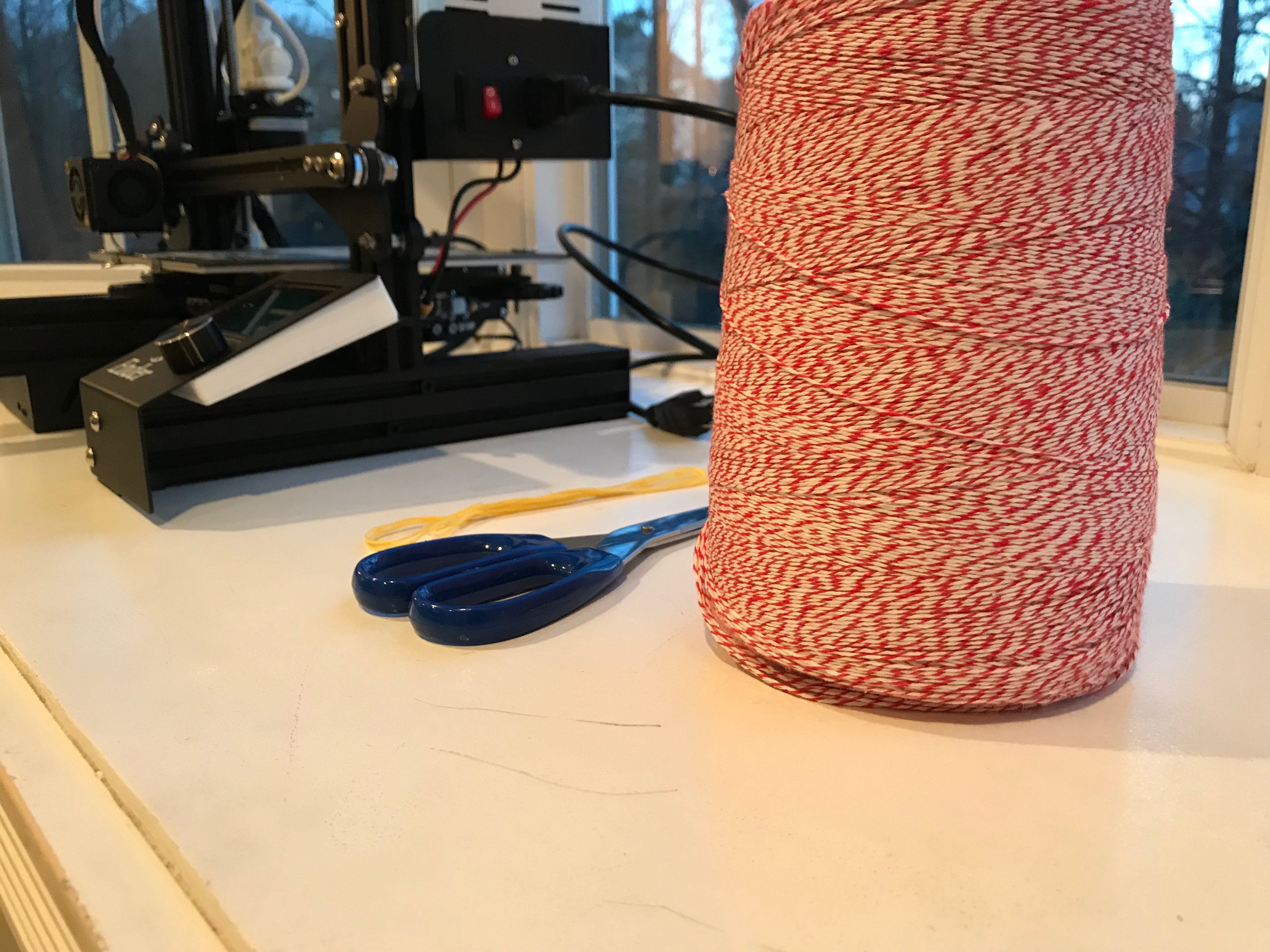
Bill of Materials:
- 3D Printer with build volume as large or larger than your preferred loom size
- Non-flexible filament
- Thin white string
- Colored string or yarn for weaving
- Scissors
Download and Customize Files
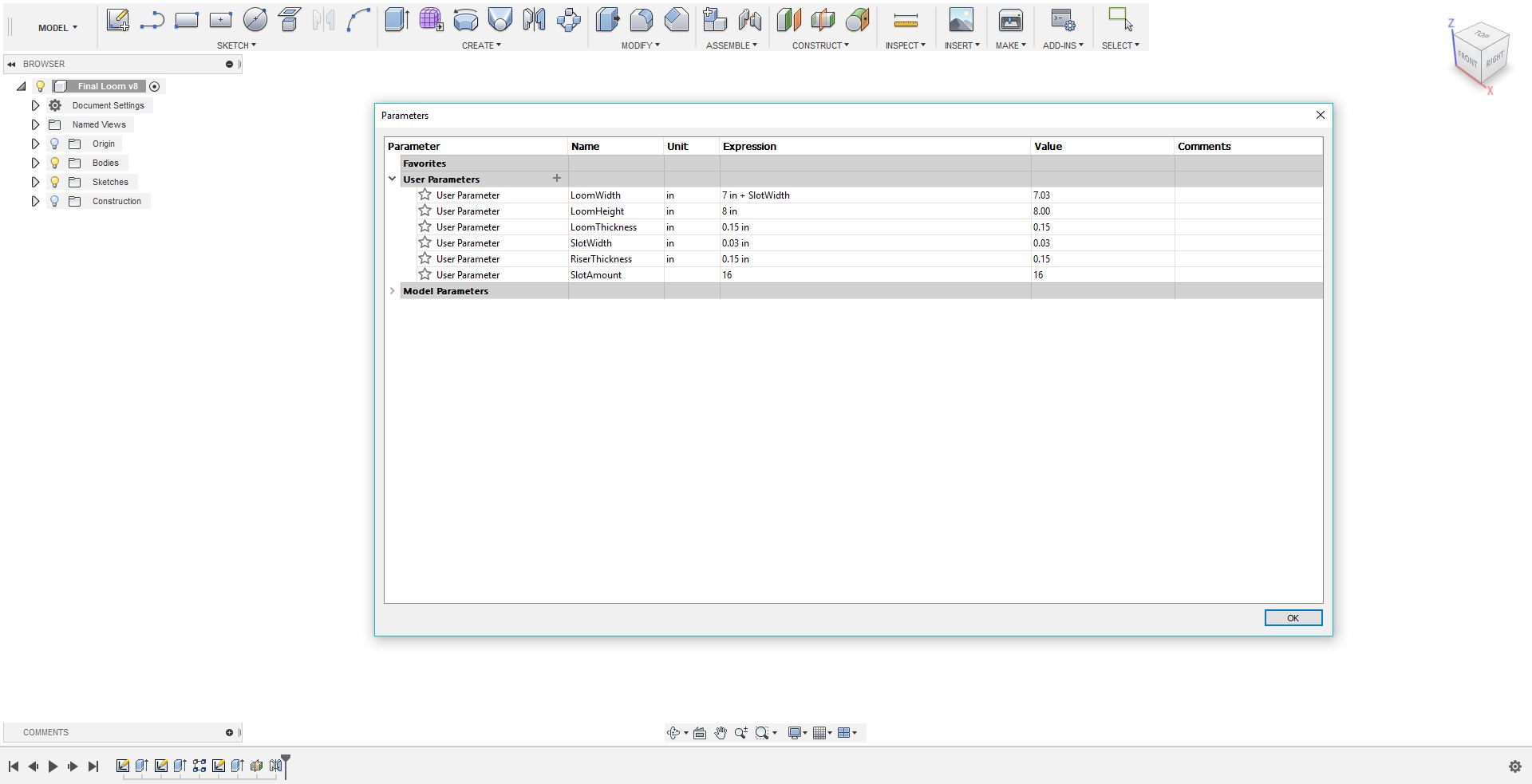
Below I attached both the .f3d file and multiple STL files for pre-made loom sizes. Choose which STL matches the size you want, or customize the file yourself. I set up the file to make it very easy to customize.
How to customize loom size:
- Open the .f3d file provided
- On the ribbon, click the word modify to open a drop-down menu
- Click "Change Parameters". It should be the last entry on the list
- Click the arrow next to "User Parameters"
- Change Width of loom
- Change the value in the expression column next to "LoomWidth". Don't delete the part that says "+ SlotWidth". Only change the number that is being added to SlotWidth
- Subtract 1 from the number you just inputted and multiply it by 4.
- Input the product from the previous step into the expression for "SlotAmount"
- Change the height of loom, thickness of loom, slot width, or riser thickness
- Change the desired parameter to the desired value
- Export the STL
- Click the 3D printer icon above the "Make" button
- Click on the loom to highlight it blue
- Either hit "OK" and save to a file, or select your desired 3D print utility to import into
Print the Loom
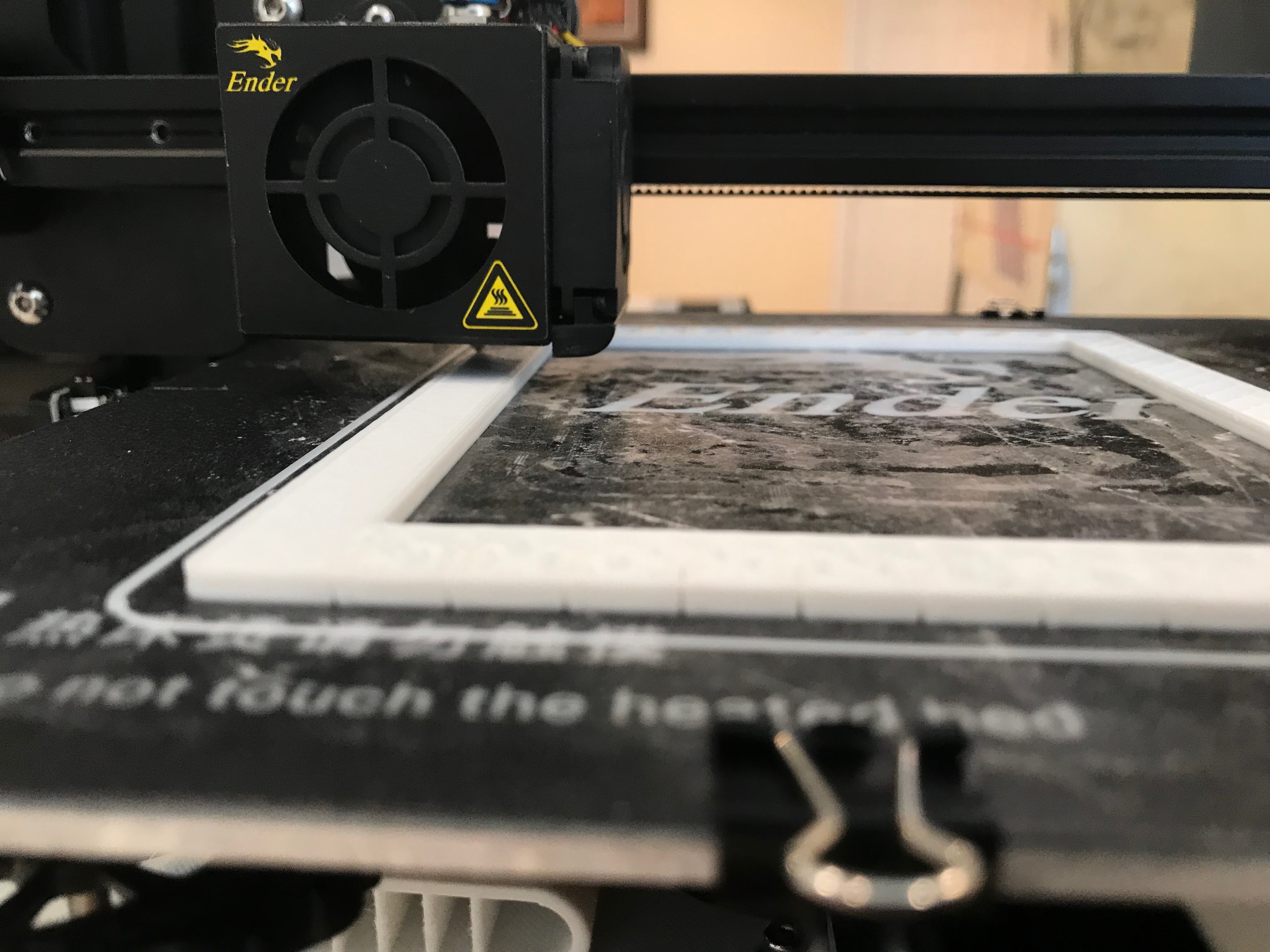
Go ahead and print the file! Check step 2 for information about customizing the loom and exporting the STL from Fusion 360. Assuming that you have the STL, you can print it in any material. I used PLA with 20% infill, printed on my Creality Ender 3. However, use whatever works best for you.
Stringing the Loom
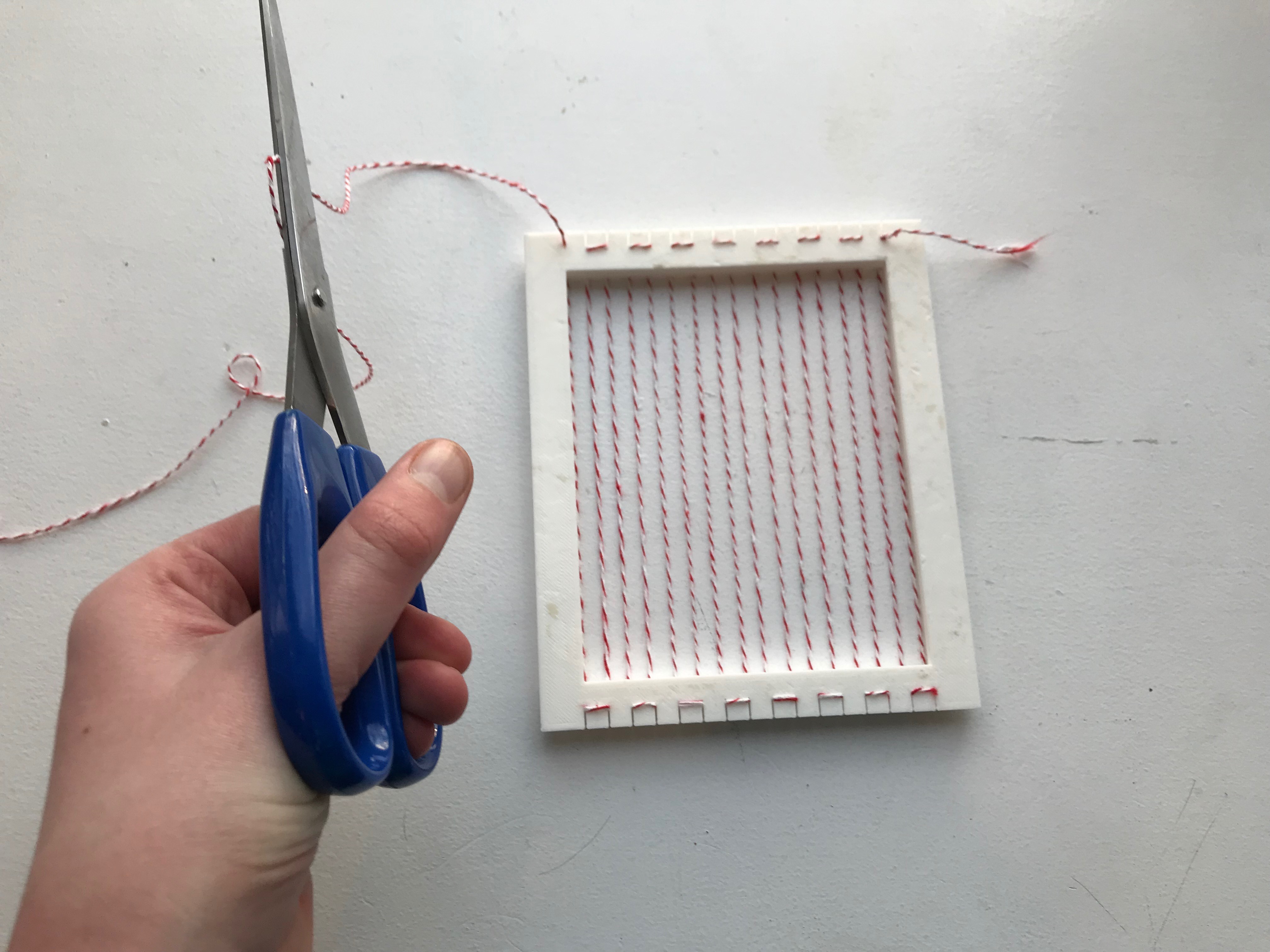
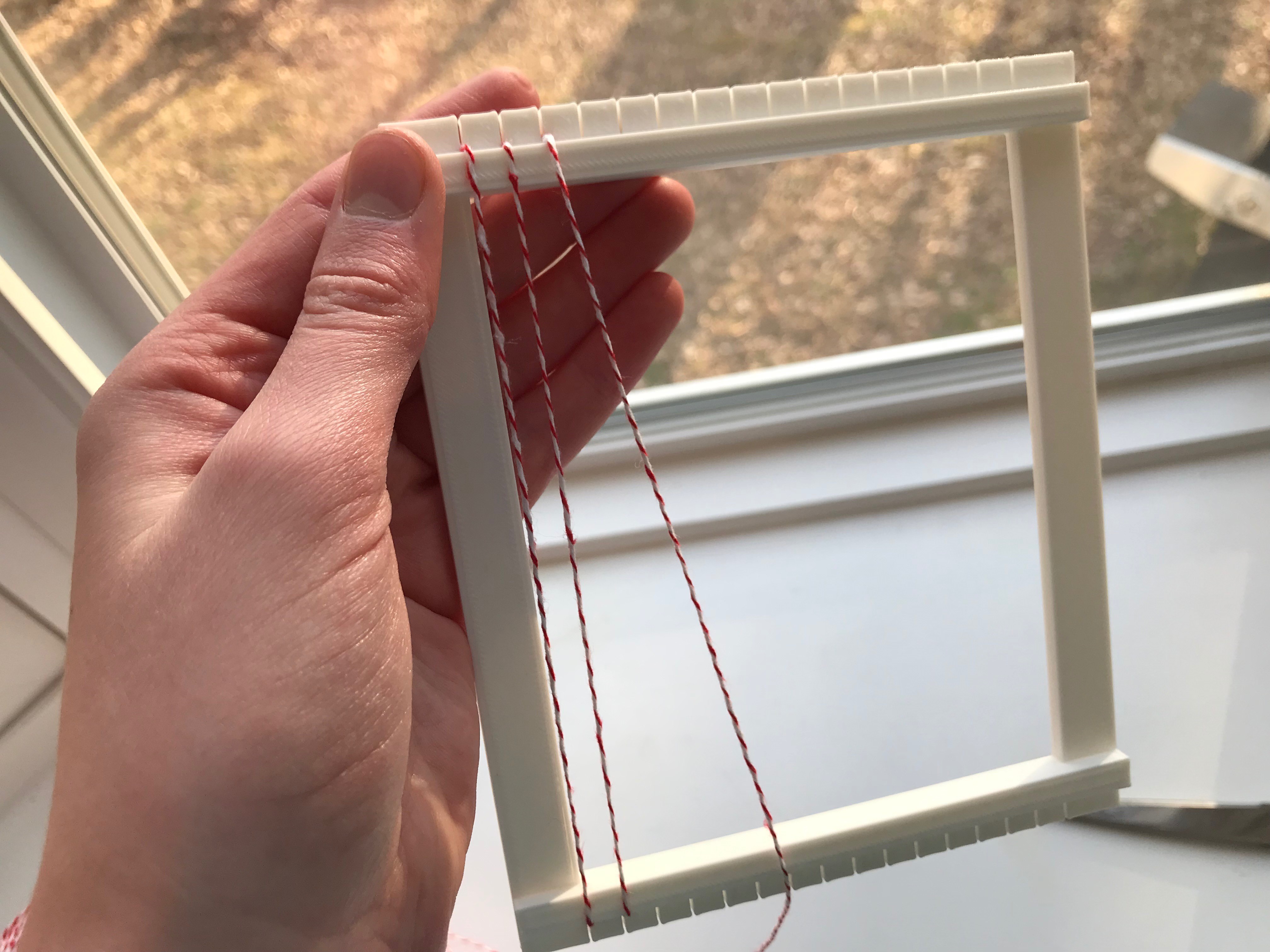.JPG)
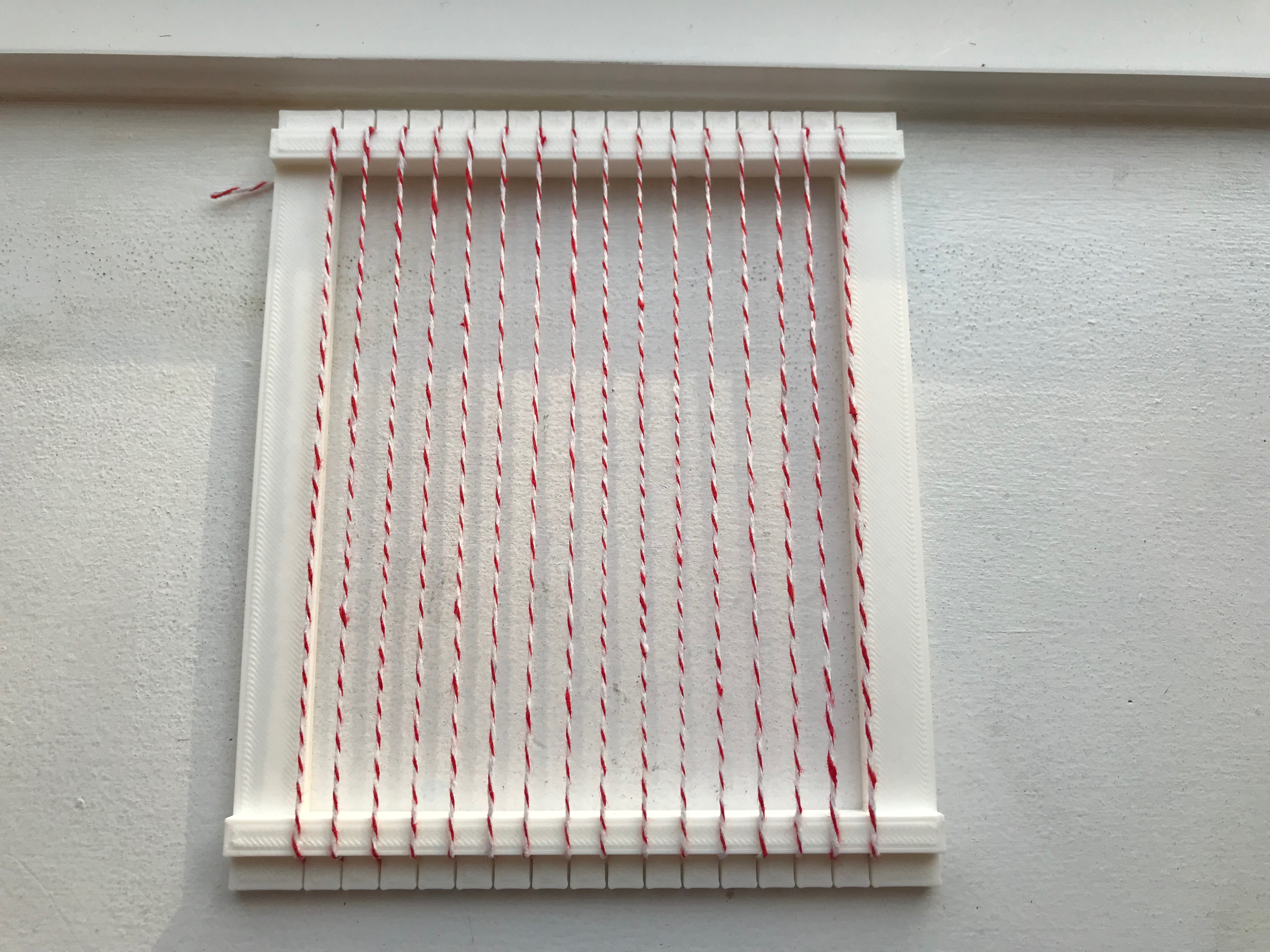
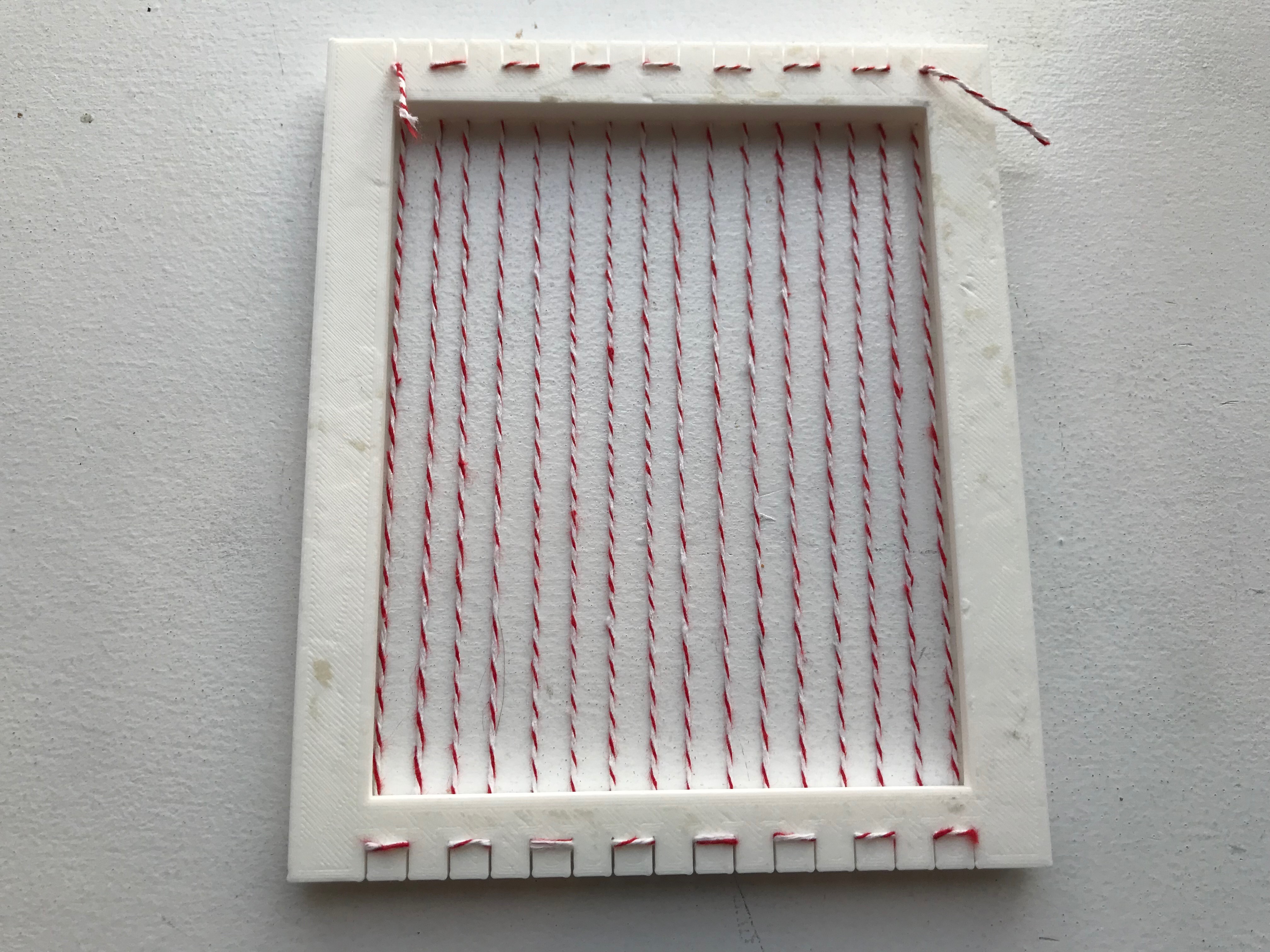
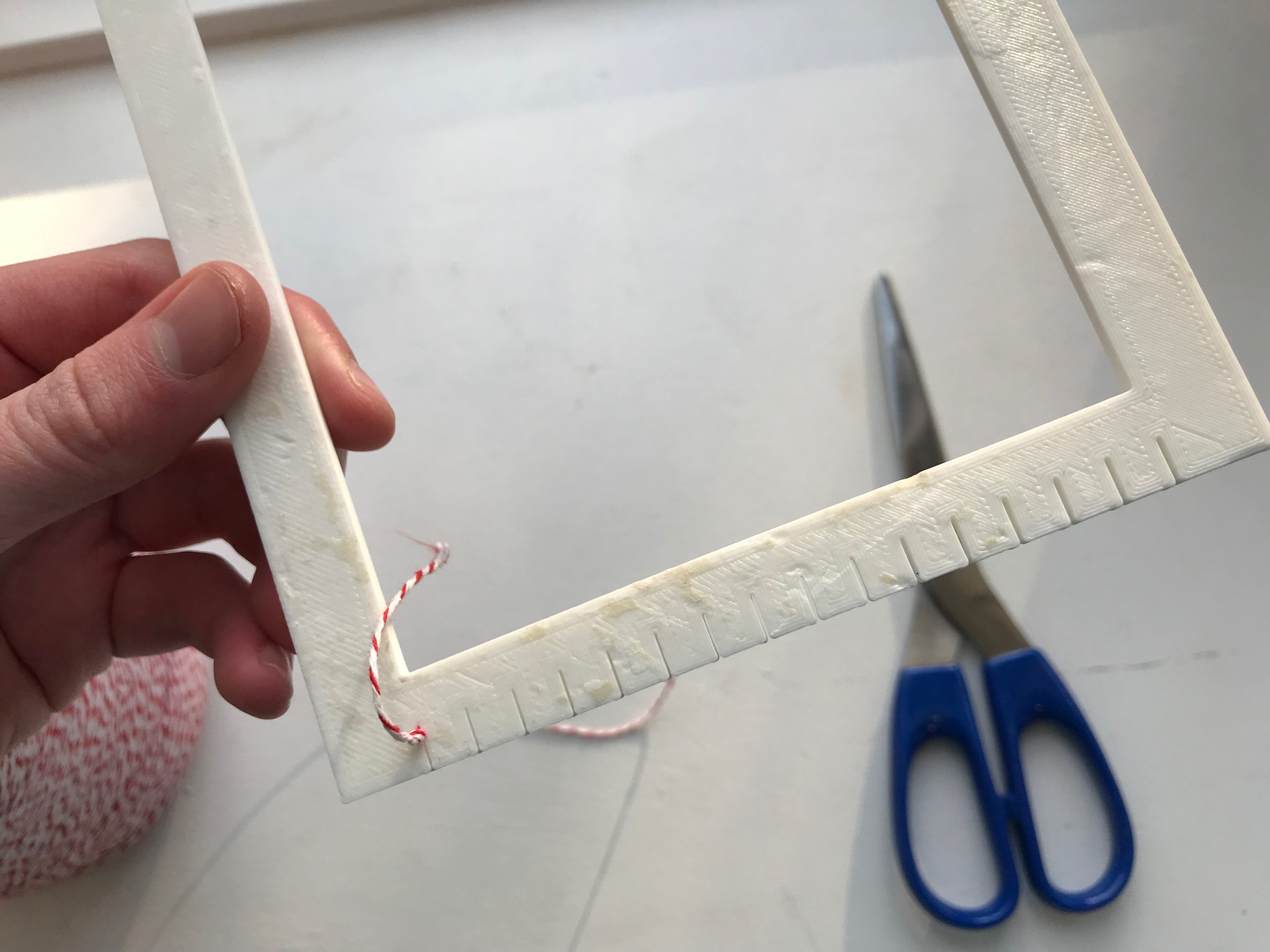
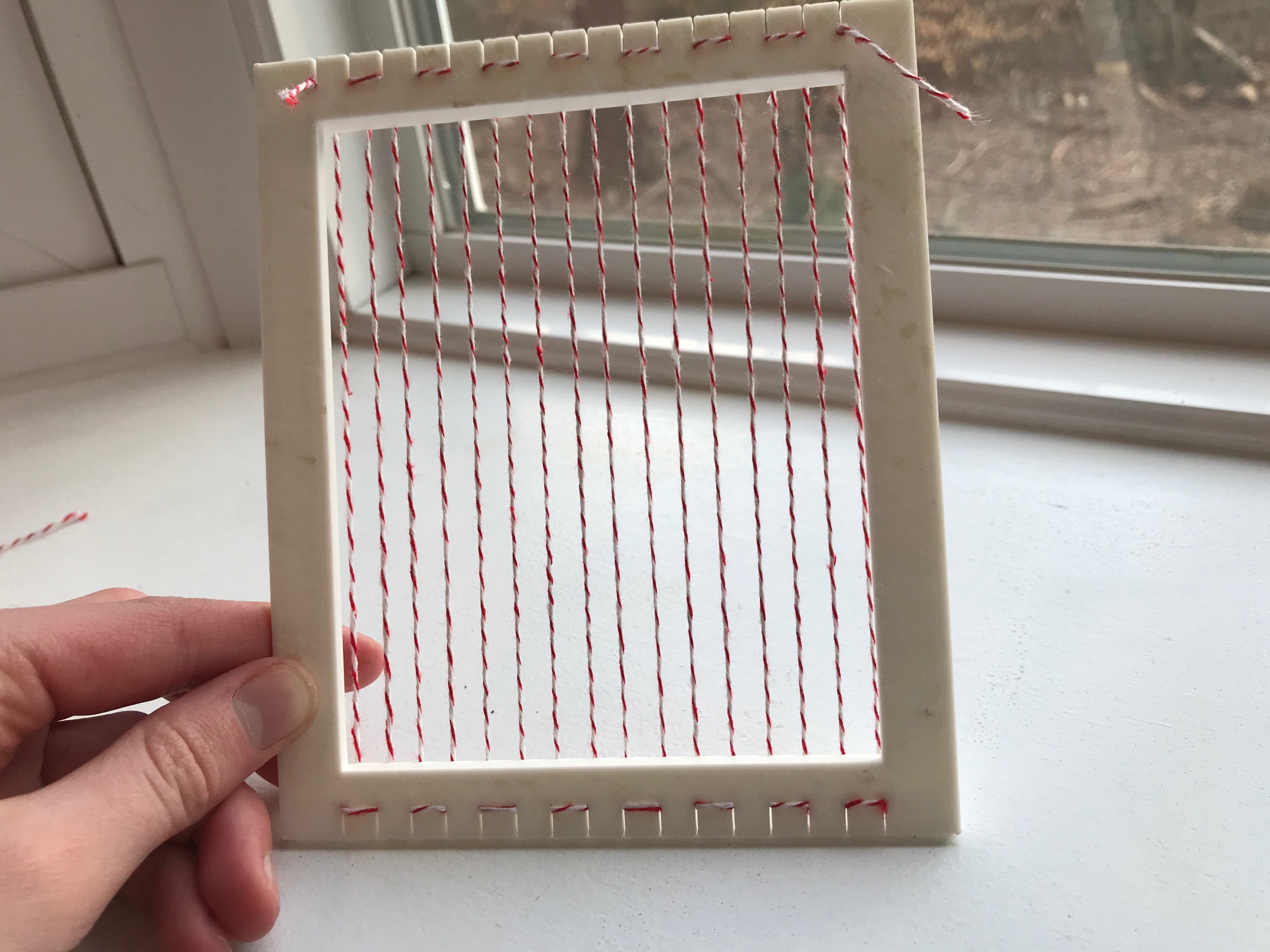
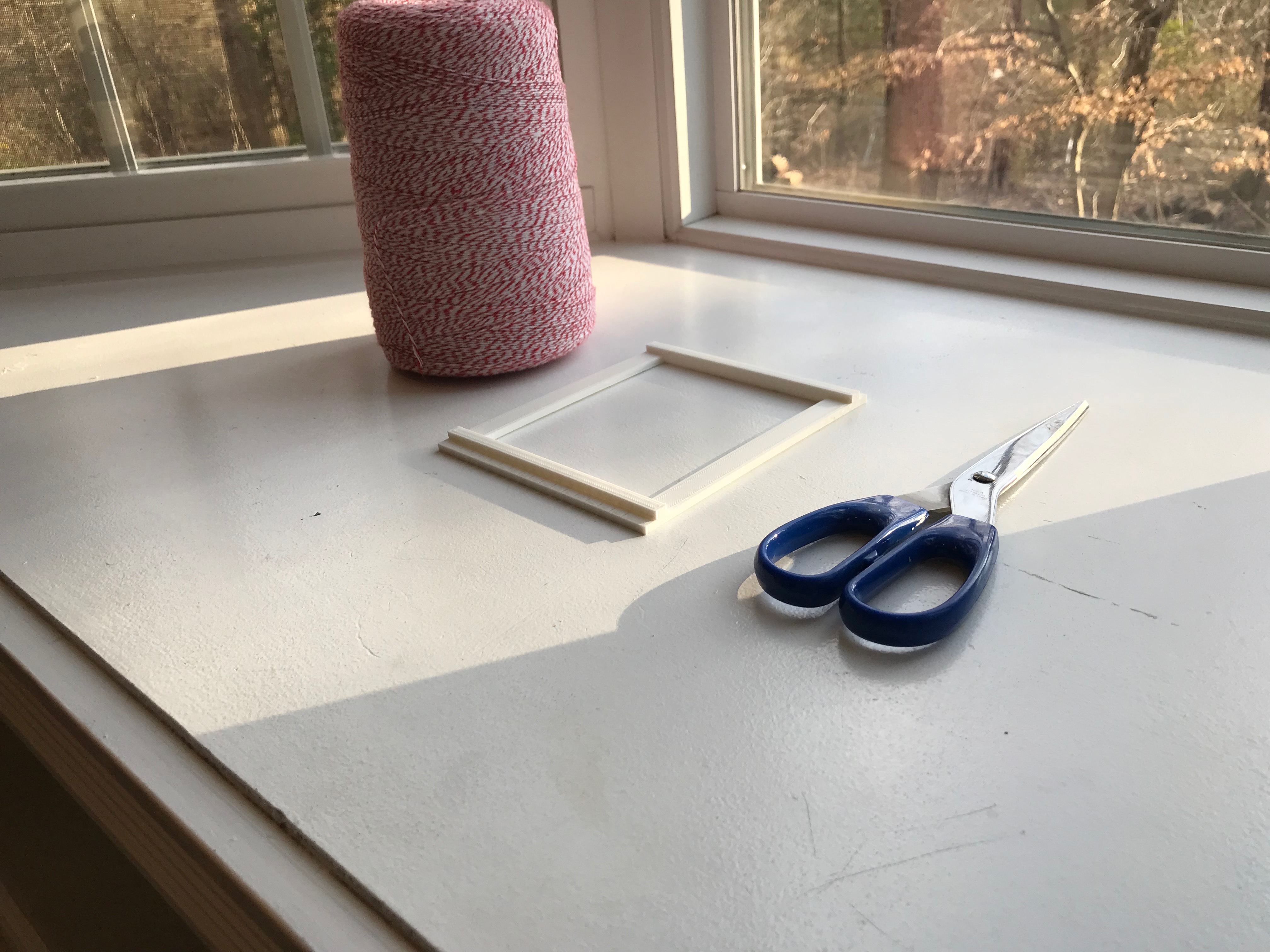
Check out this instructable and this website if you want this explained in a different way.
To string the loom, start with a piece still attached to the roll so you can add more length if you need it. Place the end of the string in the top-left slot. Then, tie a knot on the end to keep it from sliding through the slot. Move the string down to the other end and thread it through that end's slot. Then, on the same end, place the string one notch over. Move the string to the other side, placing it in that end's notch. Repeat moving it to the next notch and going across until every notch is filled. Then, cut the string and tie a knot at the end. If you're having trouble getting the knot close enough to the edge, a dab of hot glue or a piece of tape can work to help fasten the string further.
Weaving
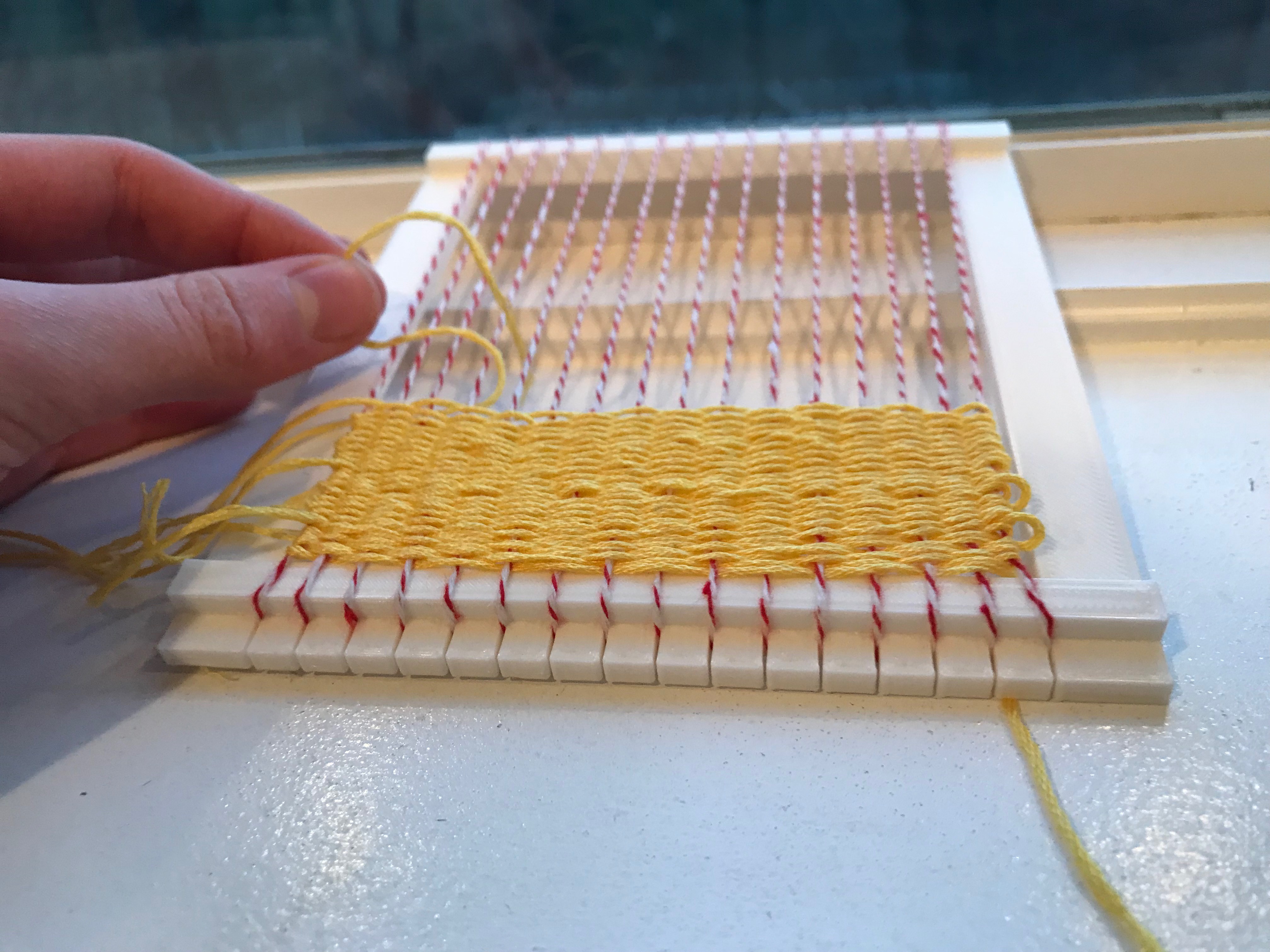
It would be redundant for me to explain the process here. So, I'll point you towards this amazing instructable. Happy weaving!
Final Thoughts
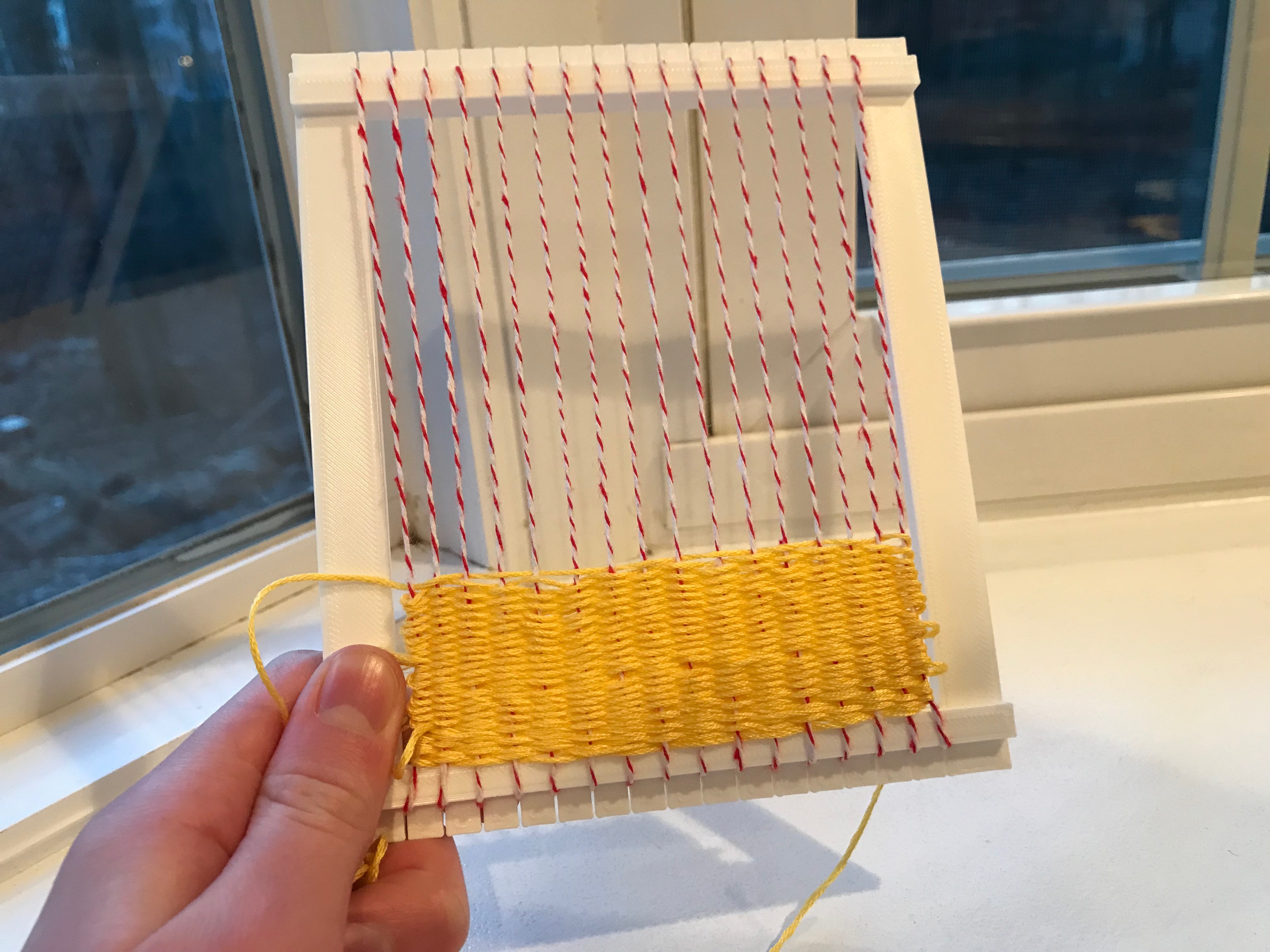
This mini loom could be used as a cheap, durable loom for getting into weaving. If I had one of these in elementary school art class... my weaving would have likely remained the quality that one expects from a second-grader. Still, I would have appreciated the durability and improved ease of use of this stylish loom (not to brag or anything...).
I hope that you enjoyed this tutorial! If you have any comments or questions, leave them below. Also, please share if you made it!